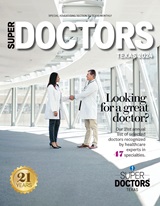American Heart Association
News Release (AHA)
November 13, 2013
A promising technology may enable doctors to diagnose and possibly treat in utero a common cause of stillbirth and sudden death in infants, according to research published in the American Heart Association journal Circulation.
The study is the first to document the electrophysiological characteristics of fetal long QT syndrome and to evaluate the diagnostic accuracy of the magnetic EKG, or magnetocardiogram, in a sizable population of at-risk fetuses.
“Until now, physicians were unable to diagnose a serious heart condition known as long QT syndrome until after birth,” said Ronald T. Wakai, Ph.D., principal investigator of the study and a professor of medical physics at the University of Wisconsin School of Medicine and Public Health in Madison. “Our study shows that you can diagnose the condition in utero and identify which fetuses are most likely to have life-threatening arrhythmia. We also showed that once detected the arrhythmia can be effectively treated in utero.”
Long QT syndrome is present in about one in every 2,000 births and accounts for about 10 percent of sudden infant deaths and unexplained stillbirths, Wakai said. It’s also a leading cause of sudden death in children and young adults. Long QT predisposes the heart to develop a potentially lethal heart rhythm, but fetuses can be successfully treated if the rhythm is identified.
Using the magnetic EKG, the researchers diagnosed long QT in the womb with 89 percent accuracy.
The researchers evaluated 30 pregnancies in 1996-2012 in Wisconsin and at two locations in Japan. They chose patients based on a family history of long QT syndrome, unexplained death of a sibling in infancy or childhood, or a suspicious fetal heart rhythm. They then collected data positioning a probe on the mother’s abdomen as early as midway through the pregnancy.
Long QT syndrome was diagnosed in 21 of the fetuses. Six of the fetuses had dangerous heart rhythms and one was delivered early after ominous rhythms were noted.
Magnetic EKGs will be put into practical use in the “not-too-distant future,” but an accurate and complete family history remains the most critical aspect of diagnosing long QT syndrome, Wakai said.
Co-authors are Bettina F. Cuneo, M.D.; Janette F. Strasburger, M.D.; Suhong Yu, Ph.D.; Hitoshi Horigome, M.D.; Takayoshi Hosono, M.D.; and Akihiko Kandori, Ph.D. Author disclosures are on the manuscript.
The National Institutes of Health funded the study.

